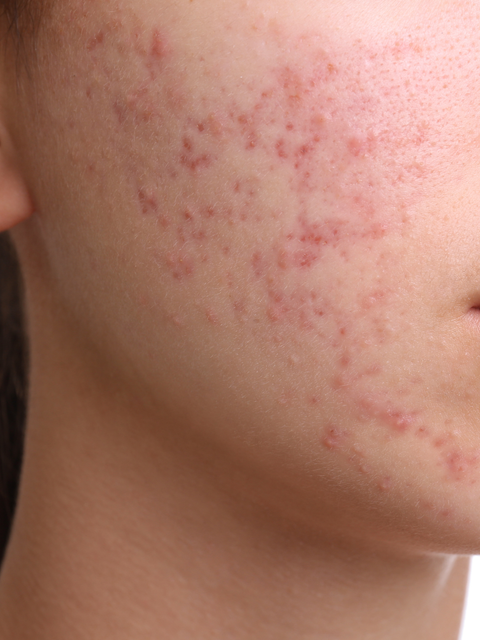
Fungal Acne vs Hormonal Acne: How To Identify And Treat Each
Key Takeaways:
- Identifying Acne Types: Understand the key differences between fungal and hormonal acne to accurately diagnose and treat each condition.
- Effective Treatments: Discover targeted treatments for both fungal and hormonal acne, including antifungal medications and hormonal therapies.
- Preventive Measures: Learn proactive steps to prevent future breakouts, such as managing diet, stress, and skincare routines.
At Sacred Rituel, we lead the way in using the healing power of nature. Our commitment to purity and potency shines through in every product, delivering transformative skincare experiences. Acne, whether fungal or hormonal, poses unique challenges and demands precise solutions. While fungal acne is often managed with antifungal treatments and diligent skincare, hormonal acne requires a nuanced approach, addressing underlying hormonal imbalances. In this piece, we will be discussing how to distinguish between fungal and hormonal acne, effective treatment strategies for each, and preventive measures to maintain clear, healthy skin.
What Is Hormonal Acne?
Hormonal acne, as the name suggests, is acne that is influenced by fluctuations in hormone levels. This type of acne is particularly common in teenagers going through puberty, women during menstrual cycles, pregnancy, or menopause, and individuals with conditions like polycystic ovary syndrome (PCOS). Hormonal acne typically appears on the lower part of the face, including the jawline, chin, and around the mouth. It is often characterized by deep, painful cysts or nodules that don’t come to a head. These breakouts can be persistent and tend to flare up in sync with hormonal changes. Because it is driven by hormones, hormonal acne may require treatments that address the underlying hormonal imbalance, in addition to typical acne treatments.
Discover the best in skincare with our most popular picks! Whether you're looking to target specific skin concerns or simply enhance your daily routine, our curated collection offers something for everyone. Shop now at Sacred Rituel and find the perfect products to achieve your healthiest, most radiant skin. Don't wait—your glow starts here!
What Is Fungal Acne?
Fungal acne, also known as Malassezia folliculitis or pityrosporum folliculitis, is a type of acne caused by an overgrowth of yeast within the hair follicles. Unlike typical acne, which is often triggered by bacteria, fungal acne is caused by the yeast Malassezia, a naturally occurring organism on the skin. When this yeast grows out of control, it can lead to inflammation and the formation of small, uniform pimples that are often itchy. These bumps typically appear on areas of the skin where there are more sebaceous (oil) glands, such as the chest, back, and sometimes the face. Fungal acne can often be mistaken for regular acne, but it requires a different treatment approach because it’s a fungal infection rather than a bacterial one.

Key Differences Between Fungal Acne And Hormonal Acne
Although fungal acne and hormonal acne can appear similar at first glance, they have distinct differences that are important to recognize for proper treatment.
- Cause: The primary difference lies in the cause. Fungal acne is caused by an overgrowth of yeast within the hair follicles, while hormonal acne is triggered by fluctuations in hormone levels.
- Appearance: Fungal acne usually presents as small, uniform pimples or pustules that may be itchy and often appear in clusters. These bumps are typically found on areas of the body with more oil glands, like the chest, back, and sometimes the face. Hormonal acne, on the other hand, tends to manifest as deep, painful cysts or nodules, often localized to the lower part of the face, such as the jawline and chin.
- Location: Fungal acne is more common on the body (chest, back, and sometimes face), whereas hormonal acne predominantly affects the lower face, including the jawline and chin.
- Treatment: Since fungal acne is caused by yeast, it often requires antifungal treatments, while hormonal acne may be treated with a combination of topical treatments and medications that regulate hormones, such as birth control pills or anti-androgens.
Recognizing these differences is crucial for choosing the right treatment strategy, as using the wrong treatments can exacerbate the condition.
How To Identify Fungal Acne
Fungal acne, often mistaken for bacterial acne, can be a tricky condition to diagnose due to its similar appearance to other types of acne. However, understanding the key characteristics and behaviors of fungal acne is crucial for effective treatment. This guide will help you recognize the specific signs that differentiate fungal acne from other skin conditions, enabling you to address it appropriately and achieve clearer skin.
Appearance: Recognizing The Unique Look Of Fungal Acne
Fungal acne typically manifests as small, uniform, red bumps or pustules that are often itchy. Unlike bacterial acne, these bumps usually don’t develop into blackheads or whiteheads. They tend to appear in clusters, giving the skin a bumpy texture rather than isolated lesions. This uniformity in appearance is a significant clue that you might be dealing with fungal rather than bacterial acne.
Location: Identifying Common Areas Affected By Fungal Acne
Fungal acne commonly affects areas of the skin with higher oil production, such as the chest, back, shoulders, and sometimes the forehead. While it can appear on the face, it is more frequently found on the body. The distribution of these bumps in areas that are prone to sweating and oil buildup can further indicate that the acne is fungal in nature, as these conditions create an ideal environment for yeast overgrowth.
Itching: A Key Symptom Of Fungal Acne
One of the most distinguishing features of fungal acne is the presence of itching. If your acne is itchy, it’s more likely to be fungal rather than bacterial or hormonal. This itchiness is due to the yeast infection underlying the condition, which irritates the skin and triggers an immune response. Understanding this symptom can help you differentiate fungal acne from other types of acne, which may not be as itchy.
Triggers: Understanding What Exacerbates Fungal Acne
Fungal acne can be triggered or worsened by factors such as hot, humid weather, excessive sweating, and the use of oily skin products that trap moisture. These factors create a warm and moist environment where the yeast responsible for fungal acne can thrive. Recognizing these triggers is crucial for preventing flare-ups and managing the condition effectively. By avoiding these triggers, you can reduce the likelihood of fungal acne becoming more severe.
Response To Treatment: How Fungal Acne Reacts To Different Treatments
Fungal acne does not typically respond well to traditional acne treatments like benzoyl peroxide or salicylic acid, which are effective against bacterial acne. If your acne persists or worsens after using these treatments, it might be fungal. Instead, antifungal treatments, such as topical or oral antifungal medications, are usually required to address the underlying yeast infection. Noticing a lack of improvement with standard acne treatments can be a strong indicator that your acne is fungal in origin.
How To Identify Hormonal Acne
Hormonal acne is a common skin condition that is often influenced by fluctuations in hormone levels. Unlike other types of acne, hormonal acne has specific characteristics that make it easier to identify, particularly in its location, timing, and the type of lesions it produces. Understanding these key features can help you recognize hormonal acne early and seek the appropriate treatments to manage it effectively.
Location: Recognizing The "Hormonal Belt"
Hormonal acne typically manifests on the lower part of the face, particularly around the jawline, chin, and sometimes the neck. This distribution pattern is often referred to as the "hormonal belt." Acne in these areas is a strong indicator that hormonal fluctuations are at play, as this part of the face is more sensitive to hormonal changes. Unlike acne that appears on the forehead or cheeks, which may be linked to other factors like oil production or bacteria, acne around the jawline is more likely to be hormonal.
Timing: The Cyclical Nature Of Hormonal Acne
One of the most telling signs of hormonal acne is its cyclical pattern. For many women, hormonal acne flare-ups occur in conjunction with their menstrual cycle, often worsening a week before their period starts. This cyclical nature is due to the rise and fall of estrogen and progesterone levels, which can increase oil production and lead to acne. Additionally, hormonal acne may become more pronounced during pregnancy, menopause, or in conditions like polycystic ovary syndrome (PCOS), where hormone levels are significantly altered.
Type Of Lesions: Identifying Deep, Painful Cysts
Hormonal acne is often characterized by deep, painful cysts or nodules. These lesions are not only larger but also more inflamed than typical pimples. Unlike surface-level acne, which consists of blackheads or whiteheads, hormonal acne tends to be rooted deeper within the skin, making it more challenging to treat. These cysts can persist for weeks and may leave scars if not managed properly, highlighting the importance of addressing hormonal acne with targeted treatments.
Triggers: Understanding What Exacerbates Hormonal Acne
Hormonal fluctuations are the primary trigger for hormonal acne, but other factors can exacerbate it. Stress is a significant contributor, as it can cause the body to produce more cortisol, a hormone that can lead to increased oil production and, consequently, more acne. Diet also plays a role, particularly the consumption of high-glycemic foods and dairy, which can influence hormone levels. Additionally, certain medications, such as birth control pills or steroids, can trigger or worsen hormonal acne, making it important to consider these factors when seeking treatment.
Other Symptoms: Recognizing Signs Of Hormonal Imbalance
In some cases, hormonal acne is accompanied by other symptoms of hormonal imbalance. For instance, women with polycystic ovary syndrome (PCOS) may experience irregular menstrual cycles, hirsutism (excessive hair growth), or weight gain alongside acne. These additional symptoms can provide further clues that the acne is hormonally driven, necessitating a comprehensive approach to treatment that addresses the underlying hormonal issues.
Preventing Fungal Acne
Preventing fungal acne requires a proactive approach to skincare and lifestyle habits, as this type of acne is often triggered by environmental factors and product choices. By understanding the specific conditions that contribute to fungal acne, you can take targeted steps to reduce your risk. Here are key strategies to help you keep your skin clear and healthy by preventing fungal acne.
- Keep Skin Dry and Clean: Fungal acne thrives in moist environments, making it essential to keep your skin dry and clean. Showering promptly after sweating, especially after exercise, helps remove moisture that can lead to yeast overgrowth. Wearing loose, breathable clothing further reduces the chances of trapping sweat and heat against your skin. Incorporating antifungal body washes into your routine can also be an effective measure for areas prone to fungal acne, such as the chest, back, and shoulders.
- Use Non-Comedogenic Products: Selecting skincare and haircare products that are labeled as non-comedogenic and oil-free is vital in preventing fungal acne. Non-comedogenic products are designed not to clog pores, which helps reduce the likelihood of moisture getting trapped under the skin, a common cause of fungal acne. Additionally, avoiding heavy, oil-based products prevents creating an environment where yeast can thrive, thus reducing the risk of flare-ups.
- Avoid Overuse of Antibiotics: While antibiotics are sometimes necessary, overusing them can disrupt the skin’s natural microbiome, leading to an overgrowth of yeast. This imbalance can contribute to the development of fungal acne. If you are prone to this type of acne, it is important to use antibiotics cautiously and only under the guidance of a dermatologist. Exploring alternative treatments, especially when dealing with recurrent fungal acne, can help preserve the skin’s natural balance.
- Manage Heat and Humidity Exposure: Exposure to hot and humid environments can exacerbate fungal acne by increasing sweat and oil production, which fosters yeast growth. Limiting time spent in such environments, or taking measures like using antifungal powders to keep the skin dry, can significantly reduce the risk of fungal acne. If you live in a particularly hot climate, taking extra steps to cool down and stay dry is crucial in preventing this type of acne.
Preventing Hormonal Acne
Preventing hormonal acne involves a holistic approach that includes managing your diet, stress levels, and skincare routine. Since hormonal fluctuations are a primary cause of this type of acne, taking steps to balance your hormones can significantly reduce breakouts. Below are effective strategies to help prevent hormonal acne and maintain clear, healthy skin.
- Maintain a Balanced Diet: Diet plays a significant role in regulating hormone levels, which in turn affects the development of hormonal acne. Eating a balanced diet rich in fruits, vegetables, and whole grains helps stabilize blood sugar levels, potentially reducing hormone fluctuations that lead to acne. Reducing the intake of dairy and high-glycemic foods, which can spike insulin levels, may also help minimize acne flare-ups by keeping hormone levels more consistent.
- Manage Stress Effectively: Stress is a known trigger for hormonal imbalances, which can lead to acne. Incorporating stress-reducing activities into your daily routine, such as meditation, exercise, or even simple relaxation techniques, can help keep your hormones balanced. Adequate sleep is also crucial, as it allows the body to recover and maintain healthy hormone levels. By managing stress effectively, you can reduce one of the major contributors to hormonal acne.
- Use Appropriate Skincare: A consistent skincare routine tailored to your skin type is essential in preventing hormonal acne. Regularly cleansing your face with a gentle, non-comedogenic cleanser helps remove excess oil and impurities that can contribute to acne. Following up with a moisturizer that suits your skin type ensures that your skin remains hydrated without becoming oily. Incorporating acne-fighting ingredients, such as salicylic acid or retinoids, can also help keep hormonal acne at bay by preventing clogged pores and reducing inflammation.
- Consider Hormonal Therapies: For those who experience severe or persistent hormonal acne, discussing hormonal therapies with a healthcare provider can be a proactive step in prevention. Options like birth control pills or anti-androgens can help regulate hormones and reduce acne flare-ups. These treatments are particularly useful for individuals with conditions like polycystic ovary syndrome (PCOS), where hormone levels are significantly out of balance.
- Regular Monitoring and Adjustment: Keeping track of your acne patterns, particularly in relation to your menstrual cycle, can provide valuable insights into the hormonal triggers of your acne. By monitoring these patterns, you can adjust your skincare routine or seek medical advice when needed. Regular consultations with a dermatologist can also help in fine-tuning your acne prevention strategy, ensuring that your approach remains effective over time.
When To See A Dermatologist
Acne is a common skin condition that can often be managed with over-the-counter products and simple lifestyle adjustments. However, there are times when professional medical advice is necessary to effectively treat and manage acne. Consulting a dermatologist can provide you with specialized care and advanced treatments that go beyond what is available through self-care. Below are key situations where seeing a dermatologist is essential for achieving clearer, healthier skin.

Persistent Acne: When Over-The-Counter Treatments Aren’t Enough
If your acne remains stubborn despite weeks of using over-the-counter treatments, it may be time to seek help from a dermatologist. Persistent acne that doesn’t respond to standard topical treatments might require prescription medications or a more tailored approach that only a dermatologist can provide. They can assess your skin type, diagnose the specific kind of acne you have, and recommend stronger treatments that are more likely to deliver results.
Severe Acne: Addressing Large, Painful Cysts And Nodules
Severe acne, characterized by large, painful cysts or nodules, often requires more than just over-the-counter solutions. These types of acne lesions can be deep and difficult to treat, increasing the risk of permanent scarring if not addressed promptly. A dermatologist can prescribe powerful medications, such as oral antibiotics, retinoids, or hormonal treatments, that can reduce inflammation and prevent severe acne from worsening. Early intervention is key to minimizing the long-term impact of severe acne.
Acne That Affects Your Quality Of Life: Emotional And Psychological Impact
Acne doesn’t just affect your skin; it can also take a toll on your emotional well-being. If your acne is causing significant emotional distress, lowering your self-esteem, or leading to anxiety or depression, it’s important to seek professional help. A dermatologist can offer treatments that not only improve your skin’s appearance but also help you regain confidence and improve your overall quality of life. In some cases, they may also work with other healthcare providers to address the psychological aspects of dealing with acne.
Scarring: Preventing And Treating Acne Scars
If you start noticing scars from your acne, it’s crucial to seek professional treatment as soon as possible. Acne scars can be difficult to treat once they are fully formed, so early intervention is essential. A dermatologist can recommend a variety of treatments to minimize scarring, such as chemical peels, laser therapy, or microneedling. These treatments are designed to promote skin healing and reduce the appearance of scars, helping to restore your skin’s smooth texture.
Signs Of Infection: When Acne Becomes Red, Swollen, And Painful
Acne lesions that become red, swollen, and painful, or start to leak pus, could be signs of an infection that requires medical attention. Infected acne can lead to more serious skin conditions if left untreated. A dermatologist can prescribe antibiotics or other treatments to clear the infection and prevent further complications. Prompt treatment is essential to avoid worsening of the condition and to ensure your skin heals properly.
Unusual Symptoms: Indications Of Underlying Hormonal Issues
If you experience unusual symptoms alongside your acne, such as hair loss, irregular menstrual cycles, or excessive hair growth, these could be signs of an underlying hormonal issue like polycystic ovary syndrome (PCOS). Such conditions require a comprehensive medical evaluation and treatment plan. A dermatologist can identify these symptoms and work with you to manage the hormonal imbalance, addressing both the acne and the underlying health issue.
Final Thoughts
Understanding the differences between fungal acne and hormonal acne is essential for selecting the right treatment and achieving clearer skin. Fungal acne, caused by an overgrowth of yeast, often requires antifungal treatments, while hormonal acne is driven by hormonal fluctuations and may need hormonal therapy in conjunction with traditional acne treatments. Accurately identifying the type of acne you have is the critical first step in choosing the most effective treatment approach.
If you're uncertain about your acne type or if over-the-counter treatments aren’t delivering results, consulting a dermatologist can help you develop a tailored plan that addresses your specific skin concerns. By implementing the correct treatment strategy and taking preventive measures, you can manage and even prevent future acne breakouts. Consistency in your skincare routine, combined with patience, is key to achieving healthier, clearer skin over time.
Read also:
- Serum For Hormonal Acne
- New Blog: How Jojoba Oil heals both acne and dry skin: A skincare Adaptogen
- Managing Acne-Prone Skin: Expert Advice and Solutions
Frequently Asked Questions About Fungal And Hormonal Acne
What is fungal acne and how does it differ from regular acne?
Fungal acne is caused by an overgrowth of yeast in hair follicles, leading to small, itchy bumps. Unlike regular acne, which is caused by bacteria and typically involves blackheads or whiteheads, fungal acne is characterized by uniform pustules often found on oily areas of the body.
How can I tell if I have hormonal acne?
Hormonal acne usually appears on the lower part of the face, such as the jawline and chin, and is often linked to hormonal changes. It may also occur in conjunction with menstrual cycles, pregnancy, or conditions like PCOS.
Can fungal acne be treated with over-the-counter products?
Yes, fungal acne can often be treated with over-the-counter antifungal treatments, such as those containing ketoconazole or selenium sulfide. However, persistent cases may require a dermatologist’s intervention.
What are the signs that my acne is fungal rather than bacterial or hormonal?
Fungal acne is often itchy, appears as small, uniform bumps, and tends to occur in clusters. It also typically doesn't respond to standard acne treatments like benzoyl peroxide.
Are there any lifestyle changes that can help manage fungal acne?
Yes, keeping your skin dry, avoiding heavy, oily products, and managing heat and humidity exposure can help prevent and manage fungal acne.
What types of hormonal treatments are available for hormonal acne?
Hormonal acne can be treated with oral contraceptives, anti-androgens like spironolactone, or oral retinoids for severe cases. These treatments help regulate hormonal imbalances that contribute to acne.
How can I prevent hormonal acne from recurring?
Maintaining a balanced diet, managing stress levels, and using appropriate skincare products can help prevent hormonal acne. Consulting with a healthcare provider about hormonal therapies may also be beneficial.
What should I do if over-the-counter treatments for fungal acne aren’t working?
If over-the-counter treatments aren’t effective, consult a dermatologist for stronger antifungal medications or alternative treatments tailored to your specific needs.
Is it necessary to see a dermatologist for acne, or can it be managed with home remedies?
While some cases of acne can be managed with home remedies and over-the-counter treatments, seeing a dermatologist is recommended for persistent, severe, or complicated cases to receive a personalized treatment plan.
Can diet affect both fungal and hormonal acne?
Yes, diet can impact both types of acne. Reducing sugar and refined carbohydrates may help manage fungal acne, while dietary changes may also influence hormonal acne, particularly by reducing dairy and high-glycemic foods.
Sources:
- Pretsch, A., Nagl, M. M., Schwendinger, K., Kreiseder, B., Wiederstein, M., Pretsch, D., Miroslav Genov, Hollaus, R., Zinssmeister, D., Abdesamad Debbab, Harald Hundsberger, Eger, A., Proksch, P., & Wiesner, C. (2014). Antimicrobial and Anti-Inflammatory Activities of Endophytic Fungi Talaromyces wortmannii Extracts against Acne-Inducing Bacteria. PLOS ONE, 9(6), e97929–e97929. https://doi.org/10.1371/journal.pone.0097929
- Fox, L., Csongradi, C., Aucamp, M., du Plessis, J., & Gerber, M. (2016). Treatment Modalities for Acne. Molecules, 21(8), 1063. https://doi.org/10.3390/molecules21081063
- Malgotra, V., & Singh, H. (2021). Malassezia (Pityrosporum) Folliculitis Masquerading As Recalcitrant Acne. Cureus. https://doi.org/10.7759/cureus.13534
- Ramasamy, S., Barnard, E., Dawson, T. L., & Li, H. (2019). The role of the skin microbiota in acne pathophysiology. British Journal of Dermatology, 181(4), 691–699. https://doi.org/10.1111/bjd.18230
- Mohsin, N., Hernandez, L. E., Martin, M. R., Does, A. V., & Nouri, K. (2022). Acne treatment review and future perspectives. Dermatologic Therapy, 35(9). https://doi.org/10.1111/dth.15719

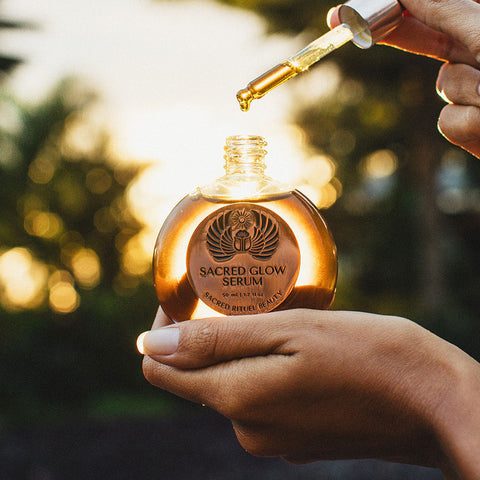

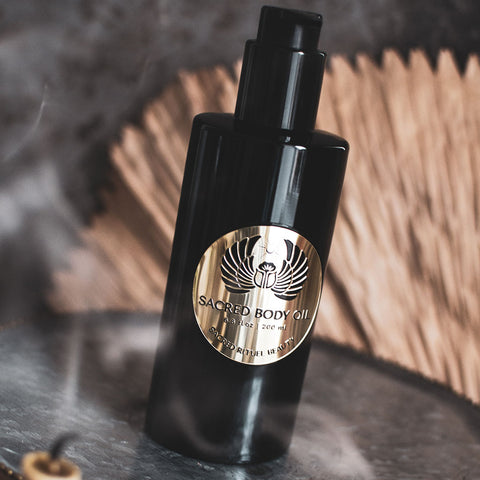
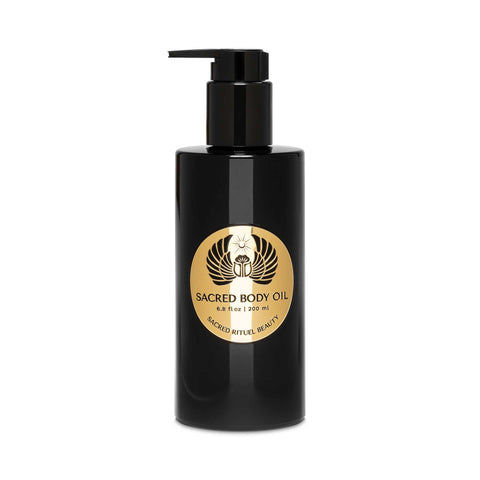

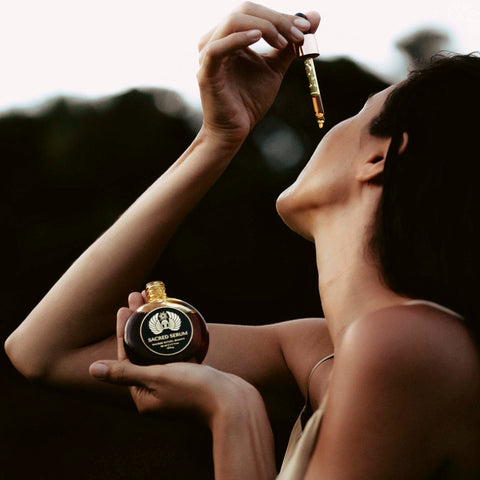
Comments (0)
There are no comments for this article. Be the first one to leave a message!